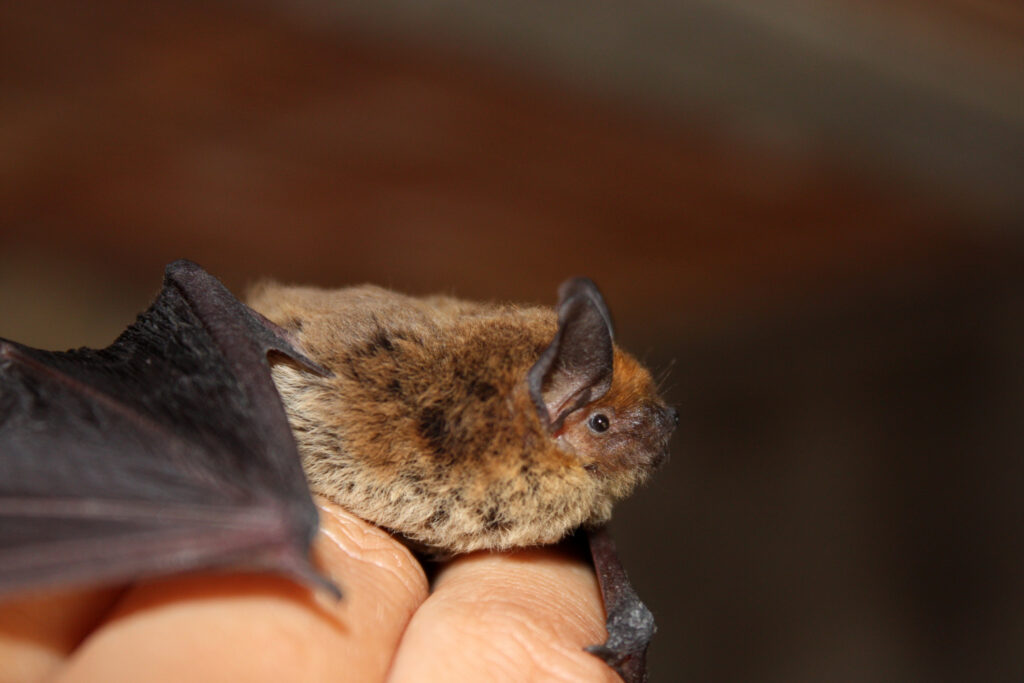From Fear to Fascination: Understanding the Essential Role of Marin County’s Bats in Our Ecosystem

By Karisma Wilson,
Former Digital Marketing Manager
October 24, 2024
A colony of Mexican Free-Tailed Bats flies near Austin, Texas.
This time of year, as we walk in our neighborhoods, we see all sorts of scary Halloween displays with witches, ghosts, and bats. But in the case of bats, there’s no need for alarm.
Not only are these misconstrued Halloween icons not a threat to humans, bats play a $3 billion dollar role in agriculture. Marin County’s 13 species of bats actually are essential to the ecosystem, eating nocturnal insects and agricultural pests, building biodiversity, pollinating plants, and dispersing seeds.
Bats became associated with Halloween largely due to their nocturnal habits and mysterious presence in the night. It’s also believed Medieval bonfires attracted insects, which in turn attracted bats. Their sudden appearance at these gatherings, along with their silent, shadowy flight, fueled myths and legends that linked them to witches, vampires, and the supernatural. Over time, as Halloween evolved into a holiday associated with all things macabre, bats became a symbol of the eerie and otherworldly themes tied to the celebration.
Marin County has 13 species of bats:
• Big brown bat
• Western red bat
• Hoary bat
• Townsend’s big-eared bat
• Pallid bat
• California myotis
• Western long-eared bat
• Little brown myotis
• Fringed myotis
• Long-legged myotis
• Yuma myotis
• Silver-haired bat
• Mexican free-tailed bat
But with 7 of the county’s 13 bat species believed to be of special concern, it’s time to set the record straight and recognize their importance in the health of our environment and our local economy.
The Importance of Bats in the Ecosystem and Beyond
Bats are important indicator species of the health of our environment. Climate change, habitat loss, roost disturbance, pesticides, insect declines, and disease can affect them.
One of the most significant contributions of bats in Marin County is their role in controlling insect populations. A single bat can consume thousands of insects (including mosquitos!) in just one night. This natural pest control is invaluable to farmers, especially those practicing organic farming methods. By keeping insect populations in check, bats help reduce the need for chemical pesticides, which not only protects crops but also preserves soil and water quality. Reducing pesticide reliance is vital for sustainable agriculture and organic farming.
By controlling insect populations and fostering healthier ecosystems, Marin County’s bats also contribute to maintaining biodiversity, allowing other species to flourish. Biodiversity is essential for ecosystem resilience, making it easier for environments to withstand changes such as climate shifts or disease outbreaks, revealing another critical role bats have in protecting local flora and fauna.
Natural Pest Control and Pollination
Across all agricultural production, consumption of insect pests by bats results in a savings of more than $3 billion per year. Many consider bats themselves to be unwanted visitors, but the bats of Marin County hunt thousands of insects a night, like the pallid bat, which has large ears and can hear crickets, grasshoppers, and scorpions walking on the ground.
While insect-eating bats are more common in Marin, other species of bats worldwide play key roles in pollination and seed dispersal. Bats feed on nectar and provide critical pollination for a variety of plants like peaches, cloves, bananas, and agaves. In fact, bats are crucial to the pollination of the agave plant, a key ingredient in tequila.
If that’s not essential enough for you, bats play yet another important role in the ecosystem – seed dispersal. Fruit-eating bats can account for as much as 95% of the seed dispersal in early growth of recently cleared rainforests.
 Little brown myotis
Little brown myotis
How to Support Our Local Bats
Despite the indispensable role bats play in our environment, one of the biggest threats to bats is habitat loss, mostly due to human disturbance.
While studies are being done to better understand where bats roost and live in Marin, misunderstanding about their value often leads to harmful practices. Since 2017, USGS and its partners have been studying Marin’s bats through acoustic monitoring.
In Marin, bat roosts have been found in bridges, trees, sheds, barns, and even neighborhood bat boxes. Our executive director and our associate events director even had the privilege of escorting a Mexican Free-tailed bat out of the umbrella of our outdoor picnic table.
If you encounter a bat, it’s important to try not to disturb it. If you need to relocate it, you should do so humanely with the help of professionals. In addition, you can:
• Spread the word about the benefits of bats and their essential role in our ecosystem.
• Turn off unnecessary lights and provide a natural habitat with dark environments around your home.
• Report bat sightings.
• Minimize the use of pesticides in your yard and garden, and consider welcoming free pest control with the installation of a bat box.
While bats are often misunderstood creatures, these nocturnal mammals are unsung heroes in ecosystems around the world, including in Marin County. Their presence offers substantial benefits to both agriculture and the environment, making them critical to the health and sustainability of the region. Bats are key players in sustaining the balance of nature, offering a silent but powerful service to both farmers and wildlife alike.
This spooky season, keep an eye out for these iconic and essential local stars.